How to Thicken Spaghetti Sauce
When you buy through our links, The Breslin may earn an affiliate commission. Learn more
Are you a big fan of spaghetti, and the thin sauce will disappoint you? If you are, you should know how to thicken spaghetti sauce. Everyone knows that there is nothing more wonderful than a home-cooked meal.
A delicious and homey spaghetti dish is certainly a hearty meal that will please your stomach. What is delightful about spaghetti is certainly the sauce, and it is truly the soul of the whole dish.
Although its ingredients are readily available and the cooking process is easy, making a delicious spaghetti sauce is still very challenging since the signature thick, paste-like consistency is hard to achieve.
In this post, I will introduce you to all of the ultimate solutions to salvage a watery spaghetti sauce while maintaining its delicious flavors. Hopefully, you can gain more useful information to master this elegant Italian dish.
How To Tell If Spaghetti Sauce Is Watery?
A spaghetti sauce is a special dressing for spaghetti, which is made of tomato sauce, grounded meat, with other condiments. There might be hundreds of spaghetti sauce recipes that fascinate spaghetti lovers worldwide, and those are slightly different.
There is no true criterion for the thickness of spaghetti sauce because it is made of various ingredients with different textures. Moreover, people adjust the sauce to their liking, and some may prefer thinner versions, while others enjoy the thickness.
And it also depends on the type of spaghetti sauce. For example, Marinara sauce is always a little bit thinner than other spaghetti sauces.
Pay attention to its consistency. When you tilt the saucepan, it should move slowly. When you stir, you should feel a slight resistance and heaviness. If it goes too smooth and runny, you can be sure that the sauce needs adjusting.
With that said, below is a compilation of common methods that works effectively in thickening spaghetti sauce.
How To Thicken Spaghetti Sauce?
I will provide you several methods that I find effective to thicken spaghetti sauce in this section. Let’s read and try them to save your spaghetti sauce.
Method #1: Reduce It By Low Boil-Simmering
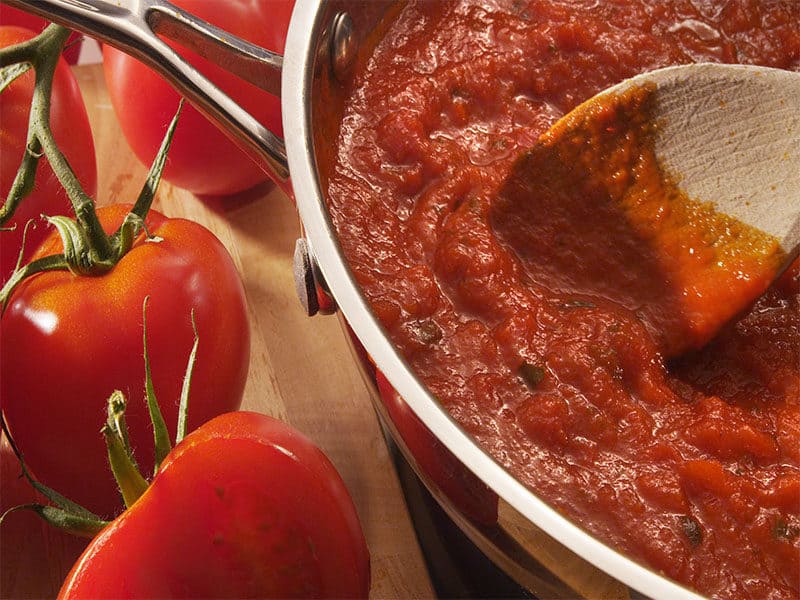
Simmering a watery spaghetti sauce is essentially the first step you should take before turning your thoughts to other thickening methods.
While it takes more time to achieve the desired thickness, it makes sure that the flavors are well-maintained, especially when you have followed a strict recipe and do not wish to compromise the taste with any add-ins.
It requires a fairly long time and constant attention, so if you aren’t in a hurry, it’s worth giving it a try.
What To Prepare:
- The spaghetti sauce
- A saucepan or crockpot
- A spoon
Instructions:
Step 1: Leave the sauce on the saucepan. Cooking it without a lid will allow water to evaporate faster.
Step 2: Turn on low heat for it to simmer with the surface bubbling.
Step 3: Use the spoon to stir the sauce frequently to prevent the solid part from sticking and burning on the bottom.
Step 4: Let it reduce until thicken significantly ( usually from 25- 30 minutes or longer )
There is no exact amount of time for this method of thickening the sauce. Usually, a good 30-minute simmering will give you a good thick sauce with a fresh taste. A longer cooking time will bring out more rich flavors from the ingredients.
Method #2: Add Thickening Agents
Adding thickening agents is always a reliable method for those who don’t want to wait. It is easy to carry out and brings immediate results.
However, adding anything that is not included in the recipe bears the risk of compromising the sauce’s flavors and is not favorable to those who are under strict control of daily calorie intake. Therefore, I also include nutrition facts for any added ingredients below.
Thicken Spaghetti Sauce With Cornstarch
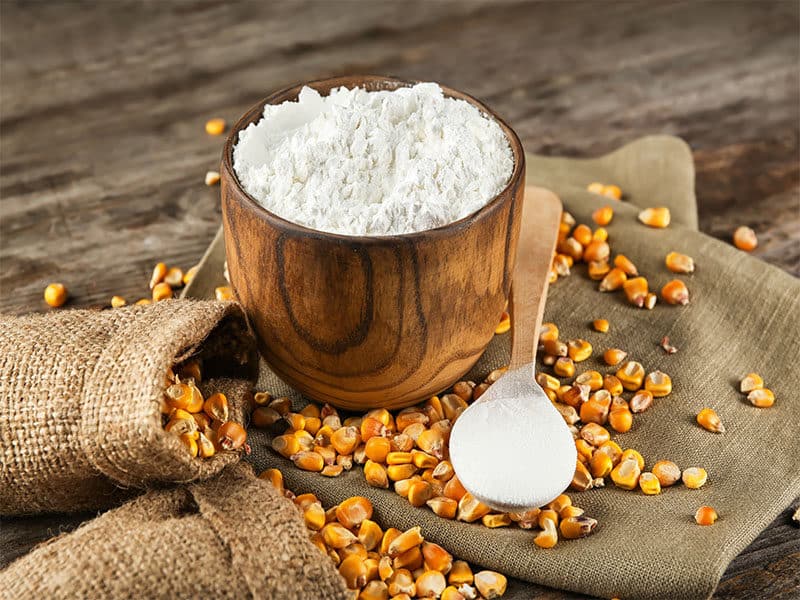
Cornstarch is certainly the most common thickening agent when it comes to thickening sauce. Its neutral flavor doesn’t dare to compromise the taste, and you can expect a nice thickening result.
If your sauce is just a little bit watery, then a small amount of starch will be the perfect rescuer.
One tablespoon (8 gram) of cornstarch contains:
- 29.3 calories
- 0 gram of proteins
- 7 grams of carbs
- 0 gram of fat
- 0.1 gram of dietary fibers
What To Prepare:
- One or two tablespoons of cornstarch (depending on the liquid the sauce has, it should be one tablespoon of cornstarch per one cup of liquid)
- A quarter cup of clean cold water
- A bowl
- A whisk
- A spoon
Instructions:
Step 1: Add cornstarch and cold water to the bowl
Step 2: Use the whisk and beat the mixture thoroughly until the ingredients are fully combined, and the mixture is smooth
Step 3: Add the mixture to the sauce while it is simmering on low heat
Step 4: Use a spoon to stir the sauce slowly to allow the cornstarch to incorporate into the sauce fully. Keep doing until you achieve a desired thick consistency.
Besides the cornstarch mixture, you can add a roux (a mixture of cornstarch or flour and butter), which is a traditional way to thicken any sauce.
A tip is that whatever dry product it is, you should not add them directly in a hot boiling spaghetti sauce. It cannot dissolve no matter how much stirring and whisking you do.
While it is a rather safe and quick way to thicken the sauce, you must also be careful not to add in too much cornstarch because it can emphasize the corn flavor and destroy the sauce texture.
Add Mashed Potatoes
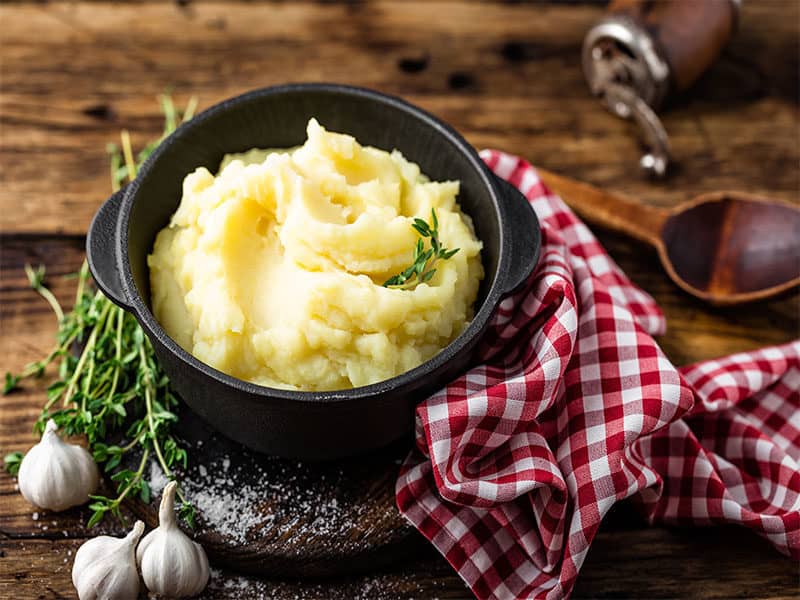
If you happen to run out of cornstarch, then consider mashed potatoes. It is a wonderful substitute for cornstarch because potatoes also contain a high content of starch. It is a lesser-known method, but the result is no less efficient.
Besides, potatoes produce an interesting upgrade in the sauce’s flavor, with a light taste of sweetness and a very filling mouthfeel while promising to achieve the desired goal.
With a good potato masher, you can make finely mashed potatoes with a smooth texture with minimal effort. Or you can make it with a fork but that requires some muscle strength.
For nutrition facts, 100 grams of white potatoes contain:
- 92 calories
- 21 grams of carbs
- 2.3 grams of dietary fiber
- 2.3 g of protein
- 17% daily value of Vitamin C
What To Prepare:
- One to two potatoes
- Butter or milk
- A peeler
- Hot water
- A fork
- A ladle
Instructions:
Step1: Clean and peel potatoes. For small potatoes, you might not need to peel them. Bigger ones need peeling for a better puree and a smoother texture.
Step 2: Use the fork to give it a good mash. Add butter or milk to make it easier and soften the texture.
Step 3: Add a part of mashed potatoes to the simmering spaghetti sauce. Use the ladle to stir and mix it with the sauce.
Add Pasta Water
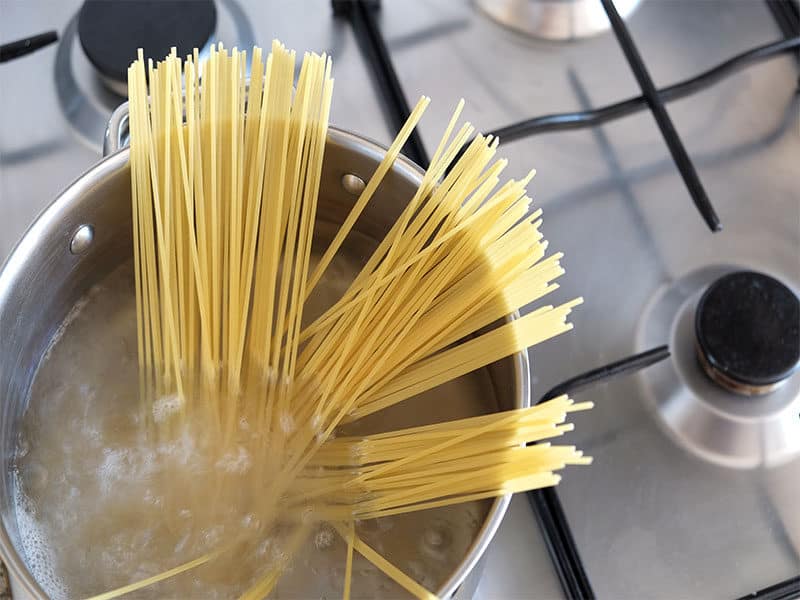
Adding pasta water is not only a useful method to thin a too-thick sauce, but can also be used to fix a runny one. It may sound like a kitchen myth, but it actually works, and here is the reason.
Pasta water always contains a certain amount of starch which comes off from the pasta itself. If you use a very small amount of water to blanch a large batch of spaghetti, then the water will become really starchy, and it can be used to thicken the sauce.
Pasta water not only creates a delectable concentrated sauce but also increases its flavors; it is definitely worth trying!
What To Prepare:
- A cup of starchy pasta water
- A spoon
Instructions:
Step 1: Add half a cup of pasta water into the simmering sauce
Step 2: Use the spoon to mix the starchy water in the sauce until well-combined
Step 3: Let it cook on low heat until the residue water evaporates and the desired thickness comes out
So, if you want to make this kind of pasta water on hand, don’t throw it away after first blanching. Store it in the refrigerator for your next use (with extreme hygienic precautions, of course!)
Method #3: Eat More Greens
Adding vegetables and plant-based ingredients is also a good way to thicken a spaghetti sauce, plus it brings great benefits to health.
Add Tomato Paste
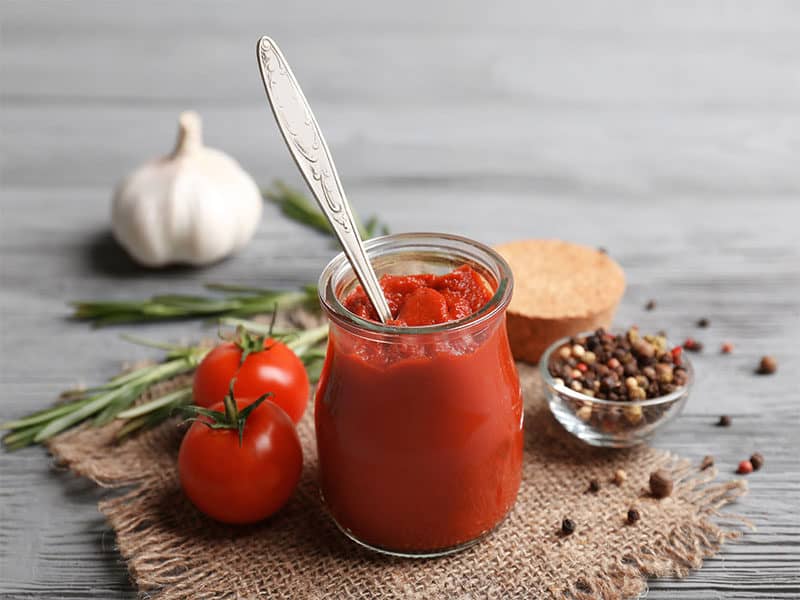
Tomato paste is also a life-saver for a runny, thin spaghetti sauce. It already has a beautiful consistency, so you can be guaranteed thickness as you desire and immediate results. What’s more, adding tomato paste to the sauce can intensify the flavors of tomatoes.
One tablespoon of tomato paste (16.61 grams) contains:
- 13 calories
- 0.016 g of saturated fat
- 3.03 g of carbs
- 0.7 g of dietary fiber
- 0.69 g of proteins
- 16 mg of sodium
- 3.5 mg of Vitamin C
What To Prepare:
- One or two tablespoons of tomato paste
- A spoon or ladle
Instructions:
Step 1: Add tomato paste to the simmering spaghetti sauce
Step 2: Use the spoon or ladle to stir it. Allow it to incorporate into the sauce fully.
However, you should bear in mind that if adding too much, acidity to tomato paste can cause overwhelming sourness. To fix the sour taste, you can add cheese, milk, or butter to alleviate the acidity.
Sometimes the sauce ends up in an overwhelming tomatoey flavor, which dominates all other flavors. In this case, refer to your original spaghetti sauce recipe and add some condiments to the sauce to regain balance.
If you want detailed instructions and tryouts with results, you can watch the following video. It shows a comparison between 4 methods: tomato paste, cheese, cornstarch, and simmering.
How To Thicken Spaghetti Sauce
Watch this video to know more:
Use Vegetables
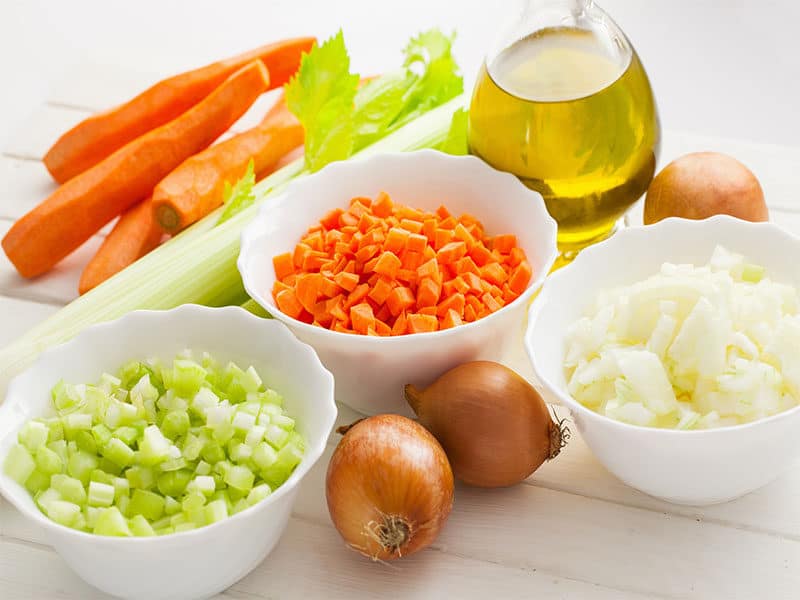
Apparently, it is the most wholesome, ultimate way to promote a healthy, low-carb eating habit. The noteworthy feature is the freshness and vitamins, and it allows diversity in your meal. It is also a clever idea if you want to encourage picky eaters to consume more vegetables.
What To Prepare:
- Any kind of vegetable of your preference
- A knife
- A ladle
Instructions:
Step 1: Clean the vegetable and chop it down into small, bite-size pieces
Step 2: Cook the sauce on low heat and allow it to simmer
Step 3: Add the chopped vegetable in and let it cook thoroughly
Step 4: Stir the sauce occasionally. Let it cook for a period of time to thicken down
The type of vegetable and the amount you add to the sauce will directly affect its taste. Carrots add more sweetness, while onion and celery can significantly change the flavor if added too much.
If you prefer a velvety smooth sauce texture, then you can use a hand blender to puree the poached vegetables.
Method #4: Go Dairy
The use of dairy products in pasta sauce is not familiar to Italian food lovers. Besides enriching the flavors, they are also widely used in thickening spaghetti sauce. The creamy and rich taste is so wonderful that makes even the toughest food connoisseurs feel flattered.
Add Heavy Cream
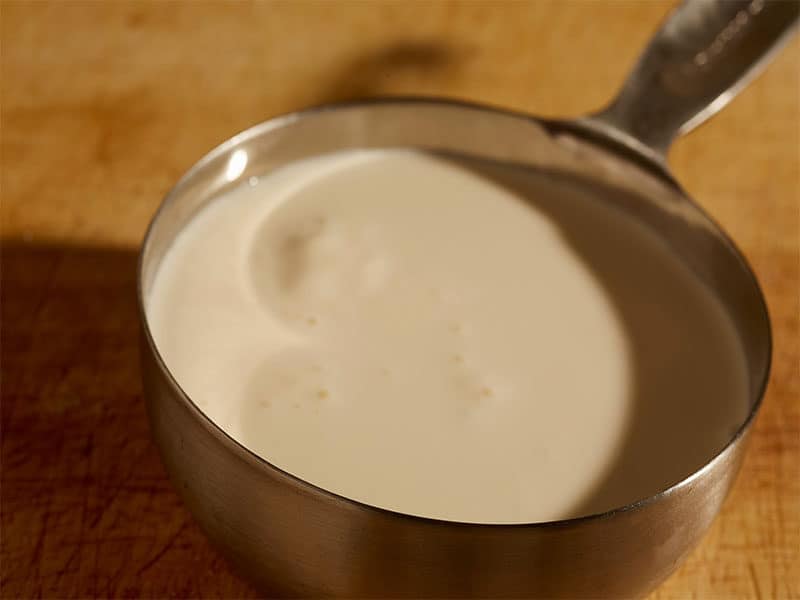
The thick texture of heavy cream is perfect for thickening in any sauce. It is also a common ingredient in cream-based sauce recipes, so don’t be afraid to try it out.
Heavy cream adds more depth to the sauce’s flavors. Its richness also complements the sourness of the spaghetti sauce perfectly. Besides, it can help decrease spiciness, in case you have mistakenly poured in excessive chilies or pepper powder.
As a dairy product, heavy cream can be very energy-rich. So, if you go overboard with it, you should be prepared to have a full belly all day (or a bloated stomach).
One fluid ounce (30 gram) of heavy cream contains:
- 101 calories
- 0.4 g of trans fat
- 34 mg of cholesterol
- 0.8 g carbs
- 0.9 g of sugar
- 0.8 g of proteins
- 1.5% daily value of calcium
What To Prepare:
- One small cup of heavy cream: In order to adjust it to your taste, you should try a small amount first, in case the taste becomes too rich to handle.
- A spoon/ladle
Instructions:
Step 1: Add a half cup of heavy cream to the simmering sauce
Step 2: Mix it into the sauce with a spoon. Meanwhile, keep your mind to the temperature. Overheating heavy cream can break down its texture and make it curdle.
Step 3: Add the other half cup if necessary
The velvety texture and creamy flavors are sure to make you mouth-watering. It is definitely worth your effort.
Add Cheese
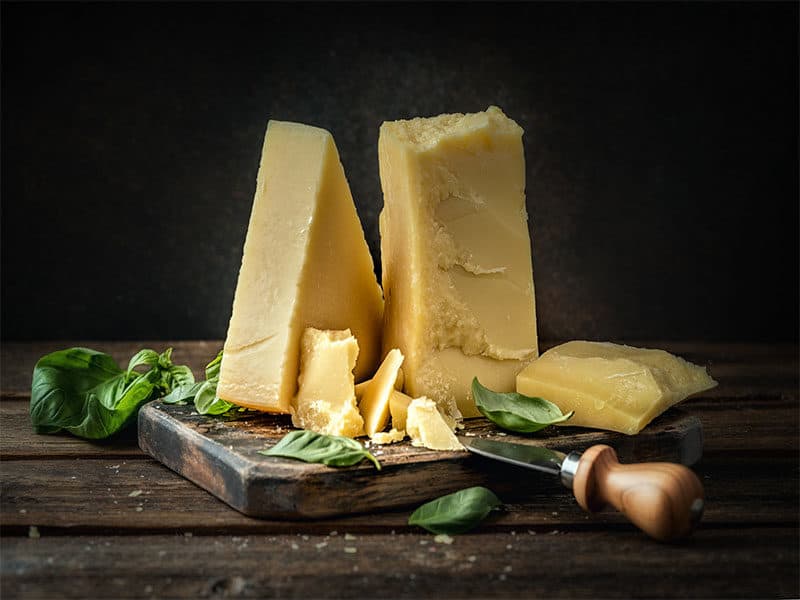
Adding cheese to a sauce must be a fascinating idea for cheese lovers. Even if you are not a fan of cheese, this method will definitely be a go-to. It can substitute for the original recipe after just one bite.
This method does not only create a thick consistency but also brings in a striking note of saltiness and richness to the sauce, so make sure don’t go overboard with it (although most are likely to. Who doesn’t love cheese?)
On average, 1 slice of cheese (28 grams) contains:
- 113 calories
- 5.3 g of saturated fat
- 0.3 g of trans fat
- 6.4 g of proteins
- 183 mg sodium
- 28 mg of cholesterol
- 15% daily value of calcium
What To Prepare:
- A block of cheese of your choice
- A grater
- A spoon
Instructions:
Step 1: Grate cheese directly onto the simmering sauce. In case you don’t have any grater on hand, you should shred the cheese or break it down into smaller pieces. It will allow the cheese to melt faster.
Step 2: Wait for the cheese to melt significantly
Step 3: Use a spoon to stir and mix the cheese in the sauce
Some common cheeses like parmesan cheese or cheddar contain a high amount of sodium, so if you prefer a low sodium version, you can try Swiss or fresh Mozzarella.
Method #5: More Proteins, More Energy!
Here is another effective method to thicken spaghetti sauce. It is simple to carry out, adds flavors and look to the dish, and gives eaters a boost of energy.
Add Meat
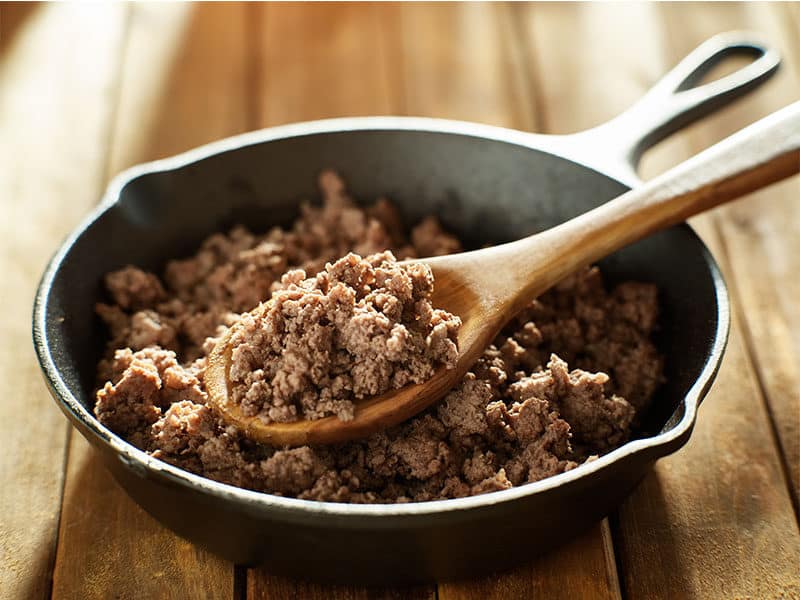
Meat is also a major ingredient in spaghetti sauce, so adding some to thicken the texture also proves to be an effective method.
Meat can intensify the sauce’s flavor with a boost of umami ness and provides a good protein source.
You need to process the meat first by cutting it into small chunks or dices in order to let them be cooked through and incorporated into the sauce more quickly. The most convenient way is to ground it with a good meat grinder.
On average, 1/2 cup of ground beef contains:
- 287 calories
- 8.669 g of saturated fat
- 0 g of trans fat
- 19.4 g of proteins
- 0 g of carbs
- 80 mg of cholesterol
What To Prepare:
- A cup of ground beef
- Olive oil, onion
- A pan
- A ladle/spoon
Instructions:
Step 1: Pour a few drizzles of olive oil into the pan and let it heat up a bit
Step 2: Load ground beef onto the pan and stir-fry it
Step 3: Add the cooked meat into the sauce
Step 4: Let it cook for a while. You should allow an adequate amount of time for the meat to soften and melt into the sauce.
Add An Egg Yolk
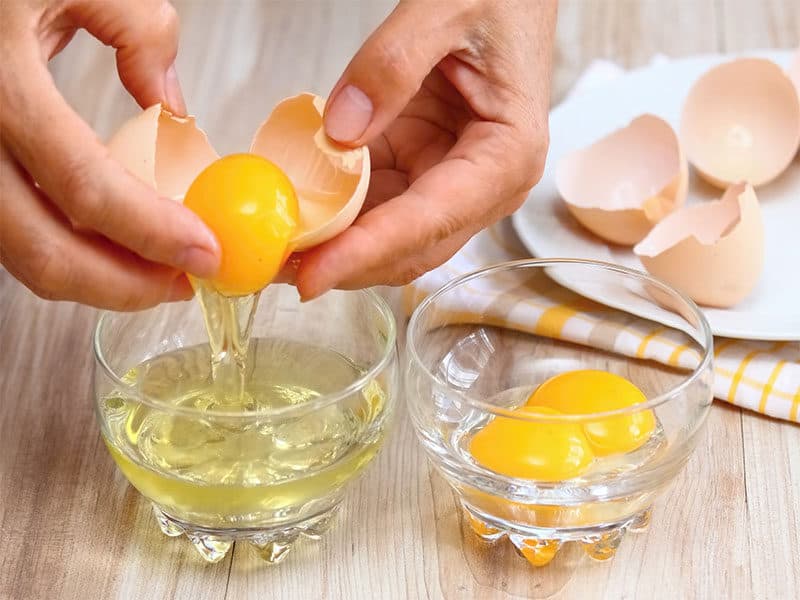
If you are familiar with carbonara recipes, you will find that adding egg yolk into the spaghetti sauce is not a strange idea at all. Egg yolk is mucilaginous, so it has the same function as a thickening agent. It enriches the flavor and adds more health benefits.
The tricky thing about this method is the temperature. A lot of people end up having scrambled eggs in their sauce, while others find the egg undercooked.
One standard egg yolk contains the following nutrients:
- 55 calories
- 2.70 g of protein
- 4.5 g of fat
- 184 mg of cholesterol
- 0.6 g of carbohydrate
- 0.10 g of sugar
What To Prepare:
- One or two egg yolks if necessary
- A bowl
- A whisk
- A ladle and spoon
Instructions:
Step 1: Put the sauce on the stovetop and allow it to cook on low heat. Take extra caution with the heat, or else you will overcook the egg.
Step 2: Add an egg yolk to the bowl and beat it thoroughly.
Step 3: Use the ladle to take a little bit of the hot sauce out and add to the bowl. Mix it with the egg until fully combined
Step 4: Pour back the mixture into the sauce and stir to mix them all together.
Step 5: Allow it to cook longer until thickened.
How Can I Avoid Watery Spaghetti Sauce?
There are several tips that can help you get away from a bland, runny sauce and ensure a thick and flavorful spaghetti sauce.
Choose The Right Tomato Varieties
As a tomato-based sauce, the type of tomatoes used will directly affect the final result of the spaghetti sauce.
Some types of tomatoes release too much juice. Excessive liquid coming from tomatoes not only causes a runny sauce but also makes it taste bland. Therefore, you should choose varieties with more pulp.
Tomatoes with low acidity and few seeds are also better options for making a velvety and flavorful sauce.
The top tomato varieties for an amazing-looking and tasting spaghetti sauce are San Marzano and Roma; both have sweet flavors, thick pulp, and fewer seeds.
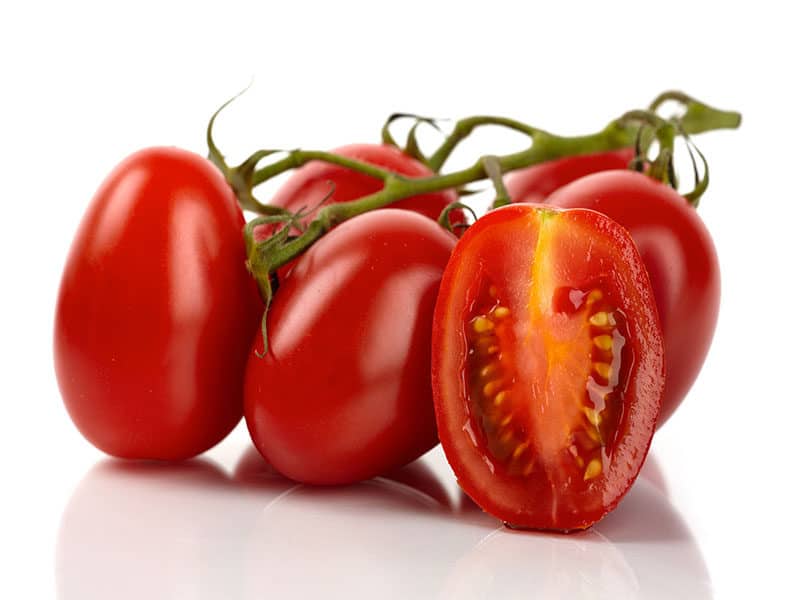
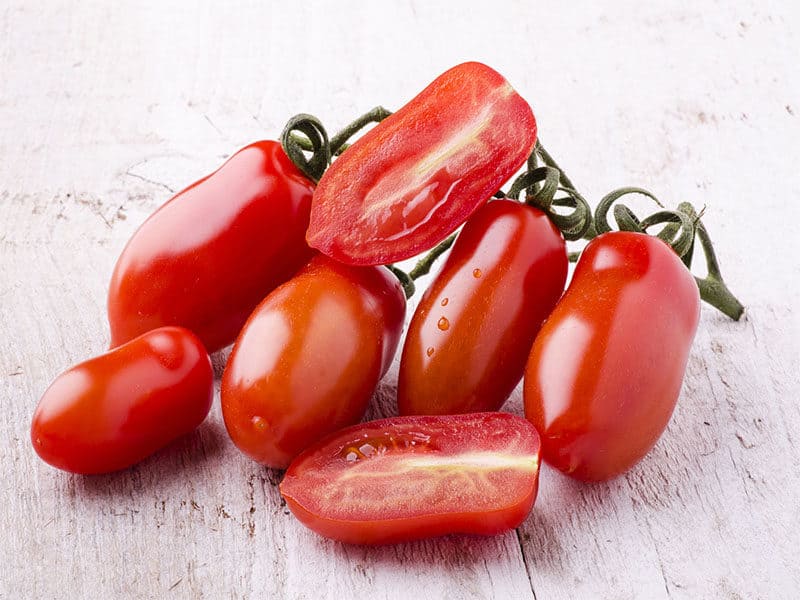
Pay Attention To Cooking Method
Do you wonder why using the same ingredients but others come out with thick sauce while yours is watery? What makes the difference is the cooking method, the kitchen know-how that makes a dish truly shine. The following tips will help you make a flavorful spaghetti sauce with wonderful thickness.
Processing Tomatoes
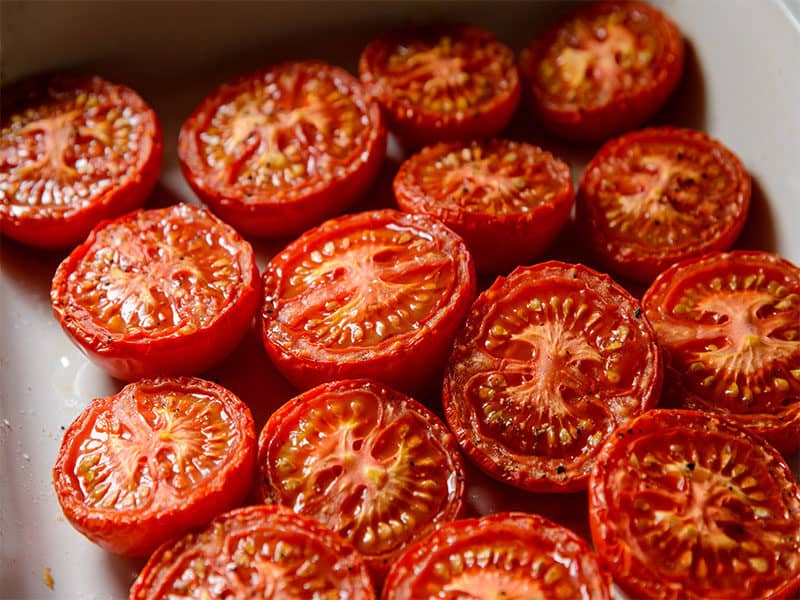
You can also cut down the amount of excess liquid by chopping tomatoes into bigger pieces. Larger chunks allow less juice to ooze out in the cooking process. Some people even roast tomatoes beforehand, peel off the skin, and take the seeds out.
Fresh tomatoes contain certain enzymes that can break down any thickening agents, which later cause the sauce to separate. So it’s recommended to cook fresh tomatoes on high heat first to deactivate those enzymes.
You can also use canned tomatoes to make spaghetti sauce. They are super convenient, less messy, and even save you plenty of time for preparation and guarantee no less rich flavor than fresh ones.
With canned tomatoes, you should squeeze the liquid out of the solid part before using it in the sauce. This will reduce pretty much water and make your sauce thicker and boost the cooking process.
Draining Spaghetti
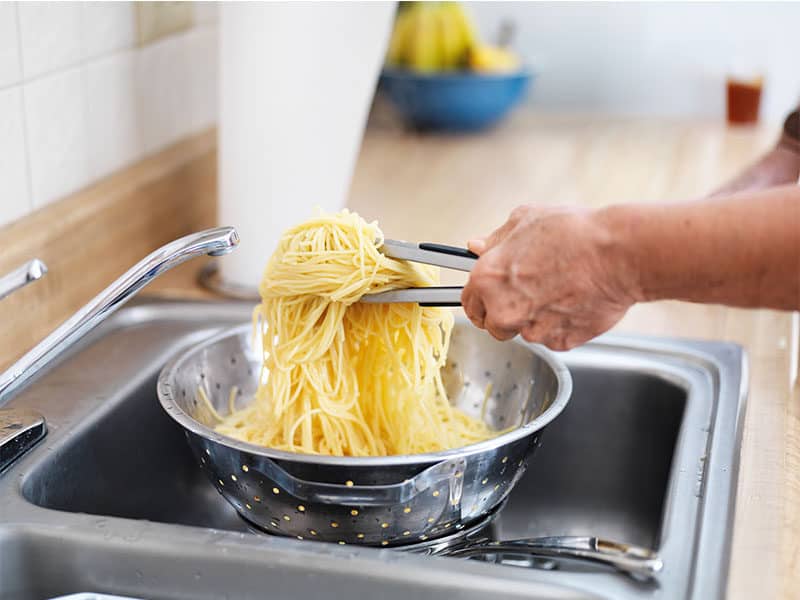
Sometimes the sauce looks thick enough in the saucepan, but it still doesn’t cling or stick to the spaghetti when they serve it on the dish. This is because the spaghetti is not drained properly.
After blanching, you should drain spaghetti with a pasta basket or a mesh strainer. Give it a good toss to reduce water. But do not rinse it with water. Rinsing will wash away the starch clinging to the spaghetti and later make it slippery for the sauce to stick to.
Also, you should not serve spaghetti and the sauce separately. After draining, pour the spaghetti directly onto the saucepan; this will allow the sauce to coat spaghetti beautifully and add more flavors.
FAQs
I am sure this post has already provided a lot of useful information for your wonders. However, it may not be quite the exact thing you are looking for. Therefore, to give an adequate answer to your specific questions, I have gathered the most commonly asked questions about thickening spaghetti sauce.
My Chosen Method
Every method I have mentioned is sure to give you an effective result. I prefer to stick with a simmering method because it guarantees me no change in the sauce’s flavors, even adding depth to them with longer simmering.
I hope this post will provide you with all the information that you need. Have you ever tried any of those thickening methods? Or you know other thickening methods that offer great taste and look? I would love to learn from your experience and results in the comment section below. And don’t forget to share this post with your family and friends!


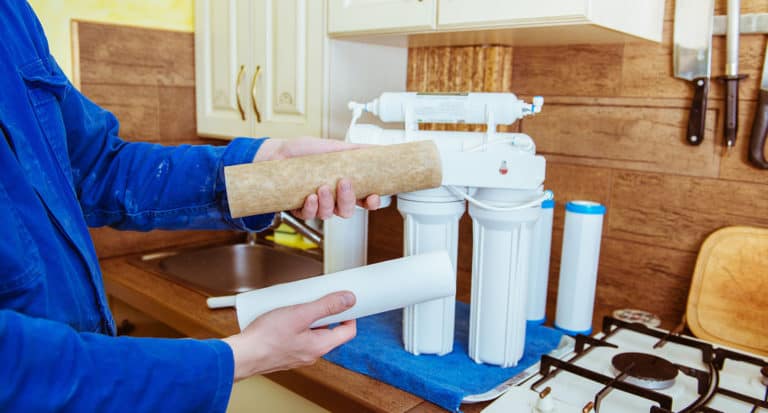
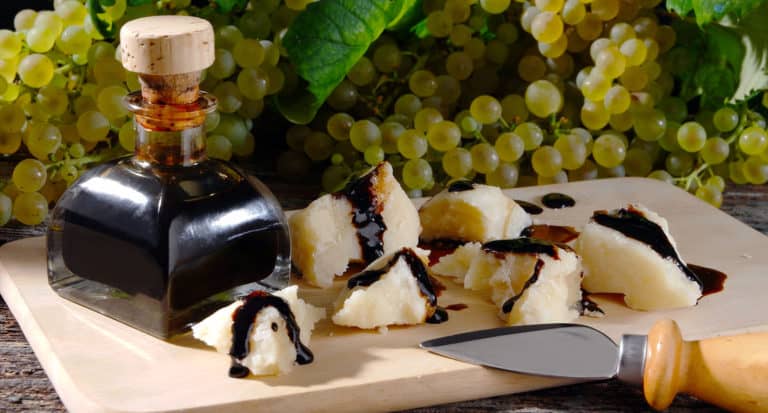

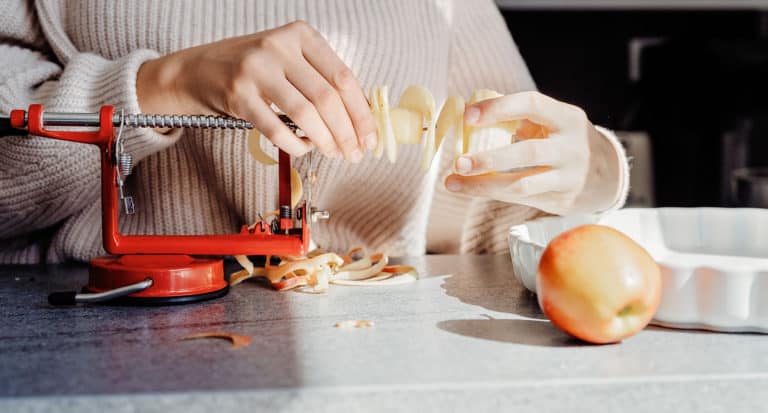
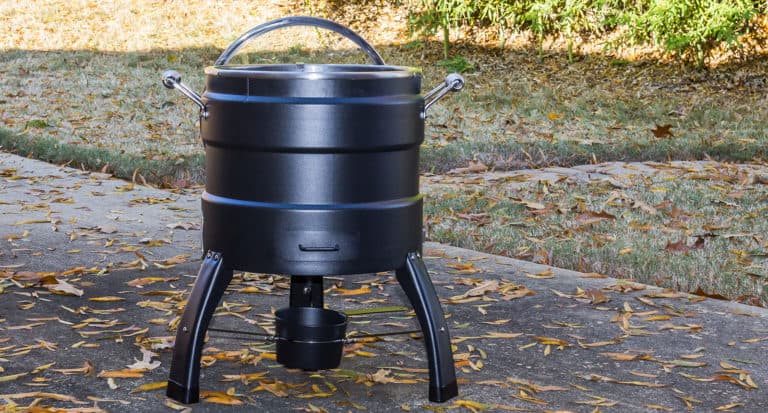
Amanda Collins
Founder and Senior Culinary Editor
Expertise
Culinary Arts and Management, Food Journalism and Critique, Recipe Development and Testing, Global Culinary Traditions, Sustainable Food Practices
Education
Institute of Culinary Education (ICE), New York, NY
Program: Diploma in Culinary Arts
Focus: Intensive hands-on training in culinary techniques, recipe development, and kitchen management, preparing students for professional roles in the culinary industry.
Monroe College, New Rochelle, NY
Program: Associate in Applied Science in Culinary Arts
Focus: Practical culinary skills, including cooking techniques, menu planning, and kitchen operations, with an emphasis on hands-on experience and industry standards.
Amanda Collins is a seasoned chef and food editor with a deep love for global flavors. Trained at the Institute of Culinary Education and Monroe College, and with over 15 years in the culinary field, Amanda has refined her skills in kitchens worldwide. Her background in food studies gives her a unique ability to share both recipes and the cultural stories that shape them.
As senior culinary editor at thebreslin.com, Amanda’s work brings authentic dishes to life, inviting readers to explore new flavors and techniques from around the globe. Her approachable style makes it easy for anyone to bring a bit of the world’s cuisine into their kitchen.